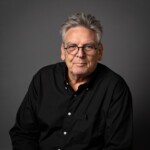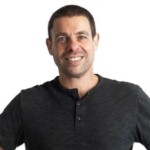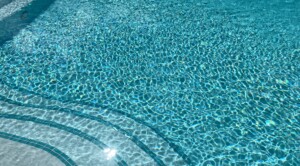Held every 4 years, The International Aquarium Congress is the world’s leading event for professionals working in public aquariums. 2012’s IAC took place 9th to 14th September in Cape Town and was hosted by the city’s Two Oceans Aquarium.
 By Charles Read
By Charles Read
The popularity and number of public aquariums is growing and with so many challenges facing the marine environment, the conference was a great opportunity for many of the aquarium industry’s conservationists, executives, developers, and curators to meet and exchange information, network and hear from their peers about latest trends and developments in the aquarium world.
Related: Two Oceans Aquarium's Dr. Pat Garratt on the International Aquarium Congress (IAC) 2012 / David Kimmel, COO Georgia Aquarium on Exceeding Expectations / Managing Guest Experience at The Monterey Bay Aquarium – David Rosenberg / Aquariums are good for you! Dr Dave Gibson, MD, National Marine Aquarium / Interview with Ted A. Beattie, CEO, Shedd Aquarium
There was a theme of sustainability running through the conference with a keynote presentation from Dr Camille Parmesan on climate change and its impact on the world’s oceans. As one of the world’s most biodiverse habitats – Table Mountain alone has more indigenous species than the British Isles – Cape Town was a fitting location for the 8th IAC, and the city provided a vibrant and stunning backdrop to the much anticipated event.
The opportunity to host the IAC is a highly competitive affair and Two Oceans Aquarium, after winning the bid, had clearly worked hard to make the event successful. The first evening saw a drinks reception at the aquarium itself, with a welcoming address by Dr. Pat Garratt in front of the aquariums “predator tank”. Amarula (think South African Bailey’s) and biltong were served and delegates were given a behind the scenes tour of the aquarium. Education and conservation are key components of the aquarium’s mission and the classrooms and outreach programmes of the aquarium were particularly impressive.
Presentations: keynotes
Dr. Camille Parmesan, a professor in Integrative Biology at the University of Texas at Austin and holder of the National Marine Aquarium Chair in the Public Understanding of Oceans and Human Health at University of Plymouth, UK spoke about the impact of anthropogenic (ie man-made) climate change on the marine environment.
A brilliant scientist – in her capacity as a Lead Author, she shared in the award of the 2007 Nobel Peace Prize to Intergovernmental Panel on Climate Change – Dr Parmesan highlighted some of her data and outlined the drastic and very measurable effect climate change is having both on terrestrial and marine environments. In such a rapidly evolving field of science, she posed some serious questions and highlighted key areas of concern. It was interesting to note that coral reefs that are not currently overfished are showing a higher degree of resilience to the impacts of climate change (coral bleaching for example), meaning that conservation efforts now are as important as ever.
 She also highlighted that although tropical forests are a tremendous carbon sink, in fact native sea grass is almost twice as effective and so the restoration of coastal ecosystems is vitally important. The challenges faced with species distribution shifts are so great that she floated the idea of “assisted colonisation”, taking species from their native habits to new ones, even on new continents, to which they might be well adapted. This radical idea emphasised the enormous challenges and issues we face as a result of the sheer velocity of climate change.
She also highlighted that although tropical forests are a tremendous carbon sink, in fact native sea grass is almost twice as effective and so the restoration of coastal ecosystems is vitally important. The challenges faced with species distribution shifts are so great that she floated the idea of “assisted colonisation”, taking species from their native habits to new ones, even on new continents, to which they might be well adapted. This radical idea emphasised the enormous challenges and issues we face as a result of the sheer velocity of climate change.
Professor George Branch (above), a world authority on the Southern African marine environment, spoke about the marine biology of the Cape and its unique nature. The southern end of the African continent marks the meeting point of two great oceans and remarkably, across Cape Point, the temperature difference can be as much as 14 degrees C. Professor Branch detailed how the meeting point of these two “currents of contrast” effects the ecosystem, both in terms of biomass and  diversity. He then described the impact climate change is having on the distribution of species, explaining how the “march of the rock lobsters” has had a profound effect on the population of sea urchins and subsequently abalones around the cape.
diversity. He then described the impact climate change is having on the distribution of species, explaining how the “march of the rock lobsters” has had a profound effect on the population of sea urchins and subsequently abalones around the cape.
Presentations
At some conferences many of the speakers are promoting their products or services (organisers often give a speaker slot as a sweetener for sponsorship). One can almost feel a collective rolling of the eyes as they commence their pitch. However, all the speakers at the IAC were clearly very passionate about their work, conserving the marine environment and sharing knowledge. Each discussed key trends and developments and shared valuable information – whether husbandry, technical or environmental -with their peers. Highlights included:
Randy Hamilton of Monterey Bay Aquarium spoke about the aquarium’s experiences with Great White Sharks off the California coast. He ran us through the challenges faced when exhibiting this iconic creature, the benefits (including clear attendance spikes when the shark is on display) and the key scientific work they have been conducting alongside the project. Sharks have  been tagged and tracked all down the coast as far as Baja California and out to Hawaii and Randy showed us some slides showing the patterns of their movement through the ocean. Interestingly, they hug the coast as they travel south, then make a trip to Hawaii, whilst lingering awhile in a “shark cafe” mid-ocean, for reasons as yet unknown.
been tagged and tracked all down the coast as far as Baja California and out to Hawaii and Randy showed us some slides showing the patterns of their movement through the ocean. Interestingly, they hug the coast as they travel south, then make a trip to Hawaii, whilst lingering awhile in a “shark cafe” mid-ocean, for reasons as yet unknown.
The National Marine Aquarium Plymouth’s Scientific Officer Deborah Cracknell is working on her PhD which involves looking into the effect observing fish in an aquarium has on a person’s heart rate, blood pressure and mood. Anecdotal evidence has long pointed to the relaxing and de-stressing nature of this activity (aquariums are often found in Doctor’s waiting rooms) but Deborah’s work at the aquarium is the first time this phenomenon has been studied in detail. Her findings to date seem to support the anecdotal evidence and even lead to the conclusion that the higher stocked a tank is the more relaxing for the viewer. Good science answers questions as it reveals others and her studies are ongoing. Is there a tipping point, a certain density of fish after which the level of relaxation ceases to grow? Are some animals greater vehicles of relaxation than others – is a turtle more relaxing than a shark?
Judy Mann (below), Director at Durban’s uShaka Sea World / SAAMBR spoke about the development and history of aquariums. She looked at how they have evolved from merely exhibiting marine species to highlighting whole ecosystems, educating visitors a nd becoming deeply involved in conservation. Education has become increasingly interactive and aquariums are moving beyond promoting aquatic awareness and into the realms of human environmental behaviour change.
nd becoming deeply involved in conservation. Education has become increasingly interactive and aquariums are moving beyond promoting aquatic awareness and into the realms of human environmental behaviour change.
Delegates also heard from Rob Hicks (right), Displays Development Director at Merlin Entertainments’ SEALIFE Centres. Rob has been instrumental in the growth and success of the SEALIFE brand over the last 2 decades – Merlin has now built eight SEALIFE aquari ums in the last three years and now runs 40 aquariums in 3 continents – and talked delegates through the key aspects of SEALIFE’s sustainable business model.
ums in the last three years and now runs 40 aquariums in 3 continents – and talked delegates through the key aspects of SEALIFE’s sustainable business model.
These included the following:
- A visitor journey, with each visitor starting locally, so the visitor experience is grounded in the marine life of the location in question.
- Ongoing analysis of visitor feedback, maintaining visitor interest and maximising guest experience
- A programme of reinvestment. Either “mobile features” which are relocated on an annual basis or larger one-off investments creating a “compelling proposition” for guests to visit the aquarium.
(For a full run down of the speakers and a summary of the presentations, see Dr. Patrick Garratt’s closing remarks on the IAC 2012 website here: The global aquarium community- Sharing experiences and collectively inspiring change.)
The conference was well attended with over 300 delegates fro m over 100 countries. Institutions represented included The National Marine Aquarium, Aquamarine Fukushima, Jumeirah, The National Museum of Marine Biology, Taiwan, Oceanario de Lisboa, Vancouver Aquarium, Danmarks Akvarium, Monterey Bay Aquarium, St. Petersburg Aquarium, SEALIFE Centres, Ocean Aquarium, Johannesburg Zoo, The Horniman Museum, Virginia Aquarium, Georgia Aquarium, Shedd Aquarium, Ocearium du Croisic, Aquarium Mare Nostrum, The Deep, UShaka SeaWorld, Waikiki Aquarium, Nausicca Aquarium, Beijing Aquarium, The Florida Aquarium, The Dallas World Aquarium and of course Cape Town’s Two Oceans Aquarium.
m over 100 countries. Institutions represented included The National Marine Aquarium, Aquamarine Fukushima, Jumeirah, The National Museum of Marine Biology, Taiwan, Oceanario de Lisboa, Vancouver Aquarium, Danmarks Akvarium, Monterey Bay Aquarium, St. Petersburg Aquarium, SEALIFE Centres, Ocean Aquarium, Johannesburg Zoo, The Horniman Museum, Virginia Aquarium, Georgia Aquarium, Shedd Aquarium, Ocearium du Croisic, Aquarium Mare Nostrum, The Deep, UShaka SeaWorld, Waikiki Aquarium, Nausicca Aquarium, Beijing Aquarium, The Florida Aquarium, The Dallas World Aquarium and of course Cape Town’s Two Oceans Aquarium.
Two Oceans Aquarium were superb hosts and on the final evening of the conference we attended a gala dinner at Moyo restaurant, on the Spier Wine Estate. There was traditional African face painting and dancing, lots of wine and Dr. Garratt gave a gracious speech, bringing the IAC to a close.
The Friday saw two trips, both of which had seasoned aquarists grinning with excitement, a choice of whale watching or cage diving with Great White Sharks. I chose the sharks and after a morning of close encounters with Great Whites which was, as they say in Vancouver, “like, totally awesome”, on the return journey we had a southern right whale breach a few hundred yards from the  boat. The fourteen of us on our worryingly little boat (maybe ten foot bigger than the sharks) were weary yet elated. A fantastic week rounded off in a spectacular and fitting way.
boat. The fourteen of us on our worryingly little boat (maybe ten foot bigger than the sharks) were weary yet elated. A fantastic week rounded off in a spectacular and fitting way.
I was given a final insight into the mindset of these dedicated marine conservationists from John Racanelli, CEO of the National Aquarium, Baltimore, with whom I was fortunate enough to share a cage* . In the final moments of the trip, an enormous 12ft , one ton shark rammed into the bars, its huge mouth agape just 6 inches from my face. Once it had left, John turned to me with a look of concern. I expected him to check I was not too shaken. “Gee, " he said, "I really hope that guy didn’t hurt his mouth”.
On the final afternoon, Vancouver Aquarium’s President and CEO John Nightingale had introduced us to his city, which will host the 2016 event. It looks a tremendous place – I am hoping there will be Killer Whale watching – but it sure has a tough act to follow!
*Not a phrase I hope to use again.











